I am attempting to build a violin plot to illustrate depth on the y-axis and a distance away from a known point on the x-axis. I am able to get the x-axis labels to distribute appropriately spaced on the x-axis based on the variable distances but i am unable to get the violin plots to align. They plots appear to be shifted to the y-axis. Any help would be appreciated. My code is below:
import matplotlib.pyplot as plt
import numpy as np
import pandas as pd
import seaborn as sns
path = 'O:\info1.csv'
df = pd.read_csv(path)
item = ['a', 'b', 'c', 'd', 'e', 'f']
dist = [450, 1400, 2620, 3100, 3830, 4940]
plt.rcParams.update({'font.size': 15})
fig, axes1 = plt.subplots(figsize=(20,10))
axes1 = sns.violinplot(x='item', y='surface', data=df, hue = 'item', order = (item))
axes1.invert_yaxis()
axes1.set_xlabel('Item')
axes1.set_ylabel('Depth')
axes1.set_xticks(dist)
plt.xticks(rotation=20)
plt.show()
Example dataset:





